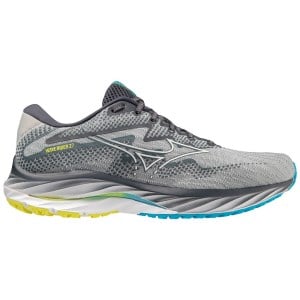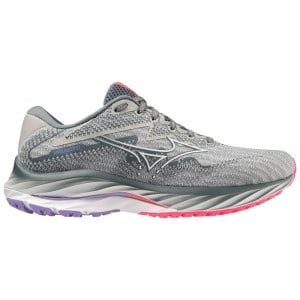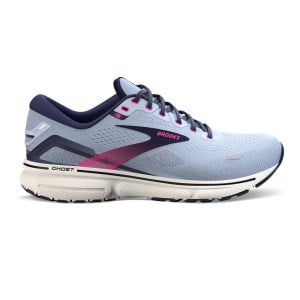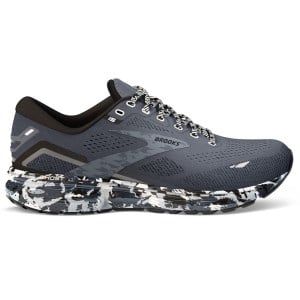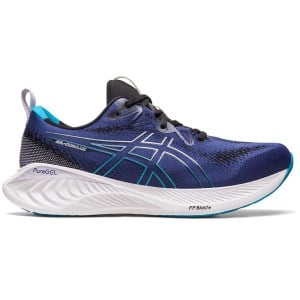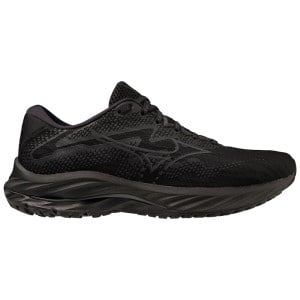Mizuno Wave Rider 27 vs 26 Comparison Running Shoe Review
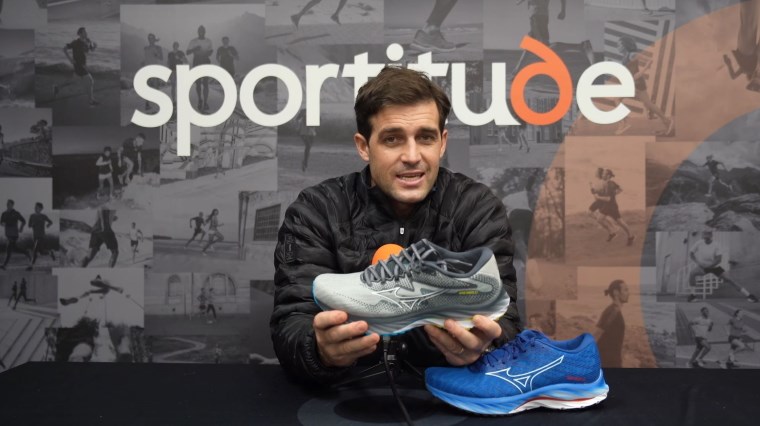
The main difference between the Mizuno Wave Rider 27 running shoes and the Mizuno Wave Rider 26 running shoes is that the Mizuno Wave Rider 27 has a roomier and more accommodating toe box while the Mizuno Wave Rider 26 offers a slightly snugger forefoot fit.
The Mizuno Wave Rider 27 has been reinforced for greater durability where the upper meets the midsole, improving the overall integrity of the running shoes to conquer long distances.
Besides these changes to the upper, the Mizuno Wave Rider 27 closely resembles the previous generation. It is a versatile option for neutral to mildly supinated foot types as well as mild overpronators seeking an eco-conscious daily trainer with a high content of recycled materials.
The Mizuno Wave Rider 27 is a running shoe of balance - packing a blend of cushioning and responsiveness into a smooth ride thanks to the Mizuno Enerzy midsole. This ever-reliable technology works in harmony with the Wave Plate, featuring plant-based Pebax Rnew to pair increased sustainability with a cushioned yet stable transition.
Underneath your foot, hard-wearing X10 rubber reinforces the high-wear zones at the back of the outsole to cater to heel strikers. Beneath your forefoot, a blown rubber compound provides a softer, springier feel for a snappy toe-off.
Check out the review with full transcript below.
-
Mizuno Wave Rider 27 - Mens Running Shoes
-
sold outMizuno Wave Rider 27 - Womens Running Shoes
-
Mizuno Wave Rider 27 - Mens Running Shoes
Hey guys, Josh here from Sportitude Running and today we're going to be comparing the new Mizuno Wave Rider 27 against the Mizuno Wave Rider 26. Side by side, there's not a lot of difference. All the difference in this shoe is in the upper, but it wouldn't be a shoe review if I didn't go through all the important statistics and features of this shoe.
We will cover the outsole, midsole and dial into the changes that Mizuno have made to the upper. Without further ado let's get stuck in.
What Foot Type Should Consider The Mizuno Wave Rider 27?
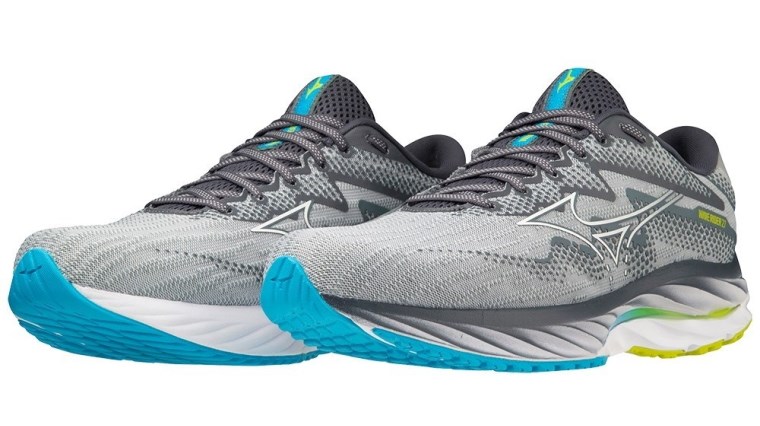
First things first, the foot type that should be considering the Mizuno Wave Rider is the neutral to mildly supinated foot type. It’s a runner who comes through their transition, lands on contact point, comes to midstance and there is little to no favour towards that medial side.
If you happen to be in mild overpronator like myself, I can comfortably run in the Mizuno Wave Rider 27 and Mizuno Wave Rider 26, it’s A-OK. However, if you're a neutral to mildly supinated foot type that applies pressure more to the outside of the shoe, this is a running shoe that you can consider if all the other criteria ticks the boxes for you.
Where Does The Mizuno Wave Rider 27 Fit In Your Shoe Rotation?
Being a balanced cushion shoe, the Mizuno Wave Rider 27 is targeting someone that's looking for some cushioning underneath their foot who's doing longer kilometres out on the road. It could be anything north of 20 minutes, right up to an hour or an hour and a half plus.
The reason we say that is because if you're looking for extra cushioning, you might go to the Mizuno Wave Sky running family. However, if you like a bit of a combination of cushioning but balance and response, the Mizuno Wave Rider 27 falls right into that conversation for you.
Outsole

It’s comparison time for the Mizuno Wave Rider 27 and Mizuno Wave Rider 26. Let's start from the ground and work our way up. Side by side you can see there is no change from last season's model to this new season.
Mizuno have X10 rubber on offer on the outsole at the back of the shoe. That's highlighted by a yellow compound of rubber. It’s a more durable compound and it's designed that way for the heel strikers. Heel strikers generally hit the ground a little bit harder, so you need a slightly more durable rubber on offer at the back of the shoe which is exactly what they have achieved, and it’s exactly the same with the Mizuno Wave Rider 26.
Coming through to the forefoot there’s a blown rubber on offer, so it's a lighter, slightly softer compound of rubber which is going to allow this running shoe to transition a little bit easier and be slightly more responsive on toe-off.
There is a vertical split between the outsole which will provide a little bit more support throughout the ball of the foot for your late-stage transition out of your gait cycle, catering to neutral to supinated foot types. Supinated foot types require a little bit more flexibility in the lateral side of the outsole, hence why you can see that exposed piece of midsole.
Midsole
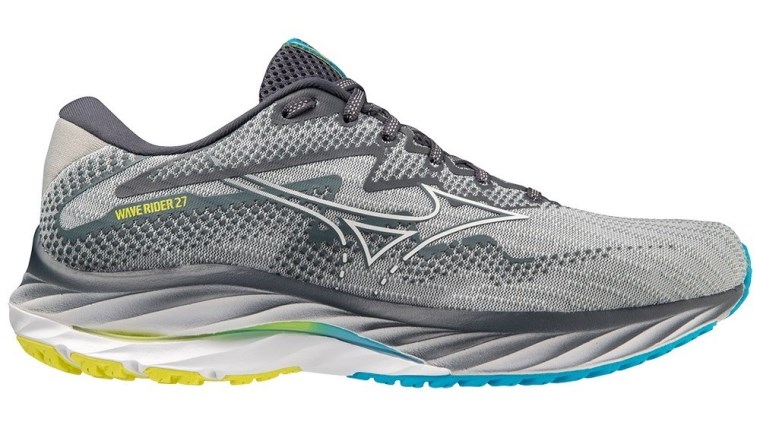
Let’s jump straight to the midsole. Again, nothing has changed. First things first, stack height-wise we have 38.5mm in the heel, 26.5mm through the forefoot with an offset of 12mm.
We have the Mizuno Enerzy midsole on offer. It isn't the softest foam in the market, but it does provide an ample amount of cushioning on entry, whether heel, midfoot or forefoot running. The great thing about the Enerzy midsole is it provides a smooth transition throughout the whole gait cycle and it has a little bit more pop as you exit out of your gait cycle.
It’s a really good, balanced midsole. We have a lot of positive feedback with this technology and the great thing about Mizuno is they're continuing with that compound in the Mizuno Wave Rider 27.
It wouldn't be a Mizuno Wave shoe if we didn't have that TPU Wave Plate on offer. It is splitting the midsole on the lateral and the medial side. It’s been strategically placed there to provide more midstance stability with this shoe.
When you make contact with the ground and transition through midstance, that Wave Plate provides a really stable transition and keeps your foot on top of that midsole, keeping it nice and balanced as you transition through to release out of your gait cycle.
Upper
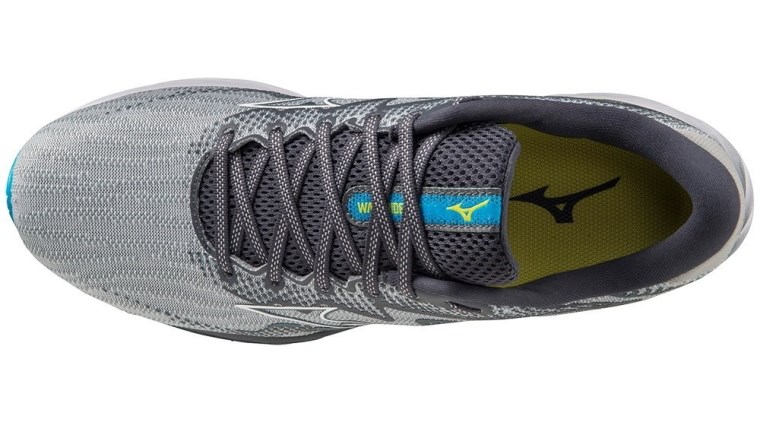
Let's talk about the change within the Mizuno Wave Rider 27 running shoes from the Mizuno Wave Rider 26 running shoes. The engineered jacquard air mesh is in the top of this shoe and it is pretty similar to what we had in the Mizuno Wave Rider 26. There's a couple of subtle changes which we'll talk about right now.
I'll start at the back of the running shoe at the internal heel counter which is vitally important for a shoe like this. It’s still the same amount of support around the back of the heel and calcaneus and also the same amount of memory foam and materials inside this heel counter.
That’s a good thing because the positivity with the Mizuno Wave Rider 26 was around being a really good deep structure at the back, and a lot of people like that fit and feel around the back of the heel. Keeping that integrity in the Mizuno Wave Rider 27 has been a great move from Mizuno.
As you come through to the midfoot, we have a gusseted tongue which is exactly what you want with a shoe like this. The tongue is attached to the midsole on the lateral and the medial sides, keeping your foot nice and stable on top. As you transition through to the forefoot of this shoe, this is where most of the change occurs.
What we have found just from our own internal testing here and from my own experience running in the Mizuno Wave Rider 27 is that we have a little bit more room in the toe box. I wouldn't say it's catastrophically different because it's not.
We don't want to see too much change, but inside the Mizuno Wave Rider 26 I could have been arguably maybe a size 9.5. I did run in the size 9 of the running shoe but I could in a 9.5 and have been pretty comfortable.
I have found the size 9 in the Mizuno Wave Rider 27 to fit perfectly and the reason being is there's a little bit more volume up top through that forefoot. Being that engineered jacquard air mesh, you’re going to get a light but strong hold regarding the overall take of the upper.
You want breathability in a running shoe like this and you get it. It's a shoe that's going to spend plenty of time out the road so you want to get plenty of ventilation through the top of that foot to reduce the amount of swelling that may occur during your distance running.
The other call-out is they have ever so slightly reinforced the lateral and the medial side of this shoe being the Mizuno Wave Rider 27 from the Mizuno Wave Rider 26.
The feedback was that we were seeing a little bit of unusual wear on the attachment of the midsole to upper on the medial and the lateral side. Just spending a little bit more time with that subtle attention to detail, we find that this running shoe will hold up a little bit better and that's a good thing. If you're buying or investing in a running shoe like this, you want it to be structurally stable and the integrity to be in the areas that you require.
Similar Shoes To The Mizuno Wave Rider 27
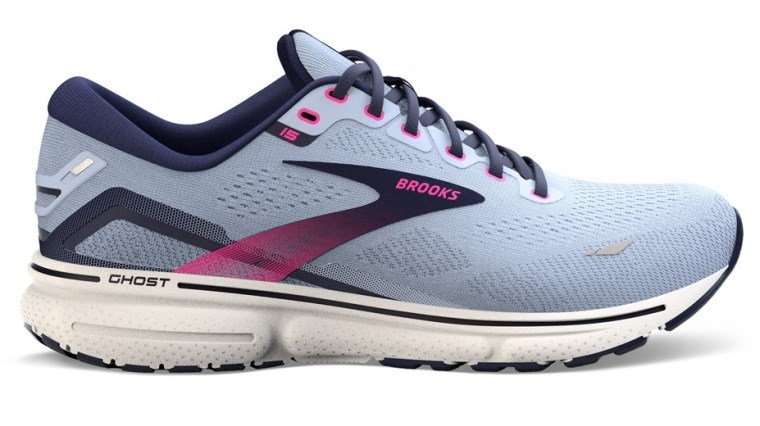
For those of you coming from a Mizuno Wave Rider 26, you're going to find the Mizuno Wave Rider 27 to be absolutely fine.
If you happen to be running in a Brooks Ghost (Brooks Ghost 15 above) or an Asics Gel Cumulus and you want to think about another shoe to add into that conversation, I would recommend trying the Mizuno Wave Rider 27. It'd be one that I'd highly recommend giving a go, that's for sure.
-
Brooks Ghost 15 - Womens Running Shoes
-
Brooks Ghost 15 - Mens Running Shoes
-
Asics Gel Cumulus 25 - Mens Running Shoes
Subjective Opinion On The Mizuno Wave Rider 27
From my perspective and my initial thoughts on this running shoe, underneath the foot nothing has changed. The performance from Mizuno Wave Rider 26 to the Mizuno Wave Rider 27 is exactly the same. It’s a really good and consistent ride with cushioning in the areas that I like and stable and responsive through the forefoot.
As I addressed in the upper part of this review, I found there to be ever so slightly a little bit more wiggle room in the Mizuno Wave Rider 27. I've been using Feetures running socks for 12 to 18 months and I might have been wearing a different sock in the Mizuno Wave Rider 26, but I’m pretty confident to say that I would have been using the same sock. The extra wiggle room inside the Mizuno Wave Rider 27 is a positive addition to this running shoe.
Widths
To call out the upper widths, we have widths in both the men's and women's models. There are standard widths, being a D in the men's model and a B in the women's model. They also have a wide offering, being 2E in the men’s model and D in the women’s model which is a good thing.
The Wrap Up
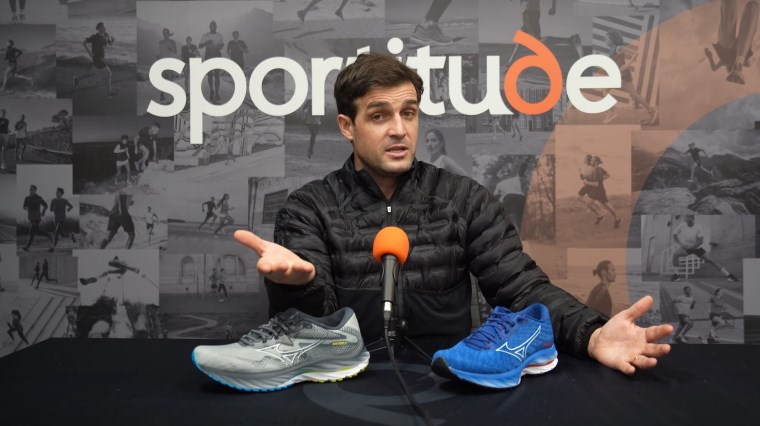
That's my take on the Mizuno Wave Rider 27. If you've used the Mizuno Wave Rider franchise in the past, please contact our Sportitude shoe experts and let us know which one has been your favourite over the journey and which ones have been a miss. We always like to hear both ends of the spectrum.
Please subscribe to the Sportitude YouTube channel if you haven’t already done so to stay notified and we'll keep popping out these running shoe reviews for you, the fabulous running community all over the world.
We love hearing your stories and we love helping you find the best running shoes to make sure that you can chase your PBs and enjoy everything that running has to offer.
Until next time, be kind to one another, stay safe, happy running and we'll see you on the road. Take care.
FEATURES
- Support: Neutral
- Upper: Engineered Jacquard Mesh
- Midsole: Mizuno Enerzy
- Heel Height: 38.5mm
- Forefoot Height: 26.5mm
- Offset / Drop: 12mm
Men
- Weight: 280g / 9.9oz
- Widths: D (standard), 2E (wide)
Women
- Weight: 235g / 8.3oz
- Widths: B (standard), D (wide)
-
Mizuno Wave Rider 27 - Mens Running Shoes
-
sold outMizuno Wave Rider 27 - Womens Running Shoes
-
Mizuno Wave Rider 27 - Mens Running Shoes
-
Mizuno Wave Rider 27 - Womens Running Shoes
For a more in-depth shoe fitting experience, you can book a free 15 minute video chat in a Live Fit session or make an appointment to discover your RunDNA at Sportitude Running@Hindmarsh.
Follow Sportitude Running at:
Instagram: sportitude.running
If you liked this, you'll love:
What Type Of Running Shoe Is Best For Me?
What Type Of Technical Running Sock Is Right For Me?
Running Shoe Guide 1: What To Do When Your Running Shoes Arrive
Running Shoe Guide 2: How To Break In Your New Running Shoes
Running Shoe Guide 3: How To Clean And Care For Your New Running Shoes

